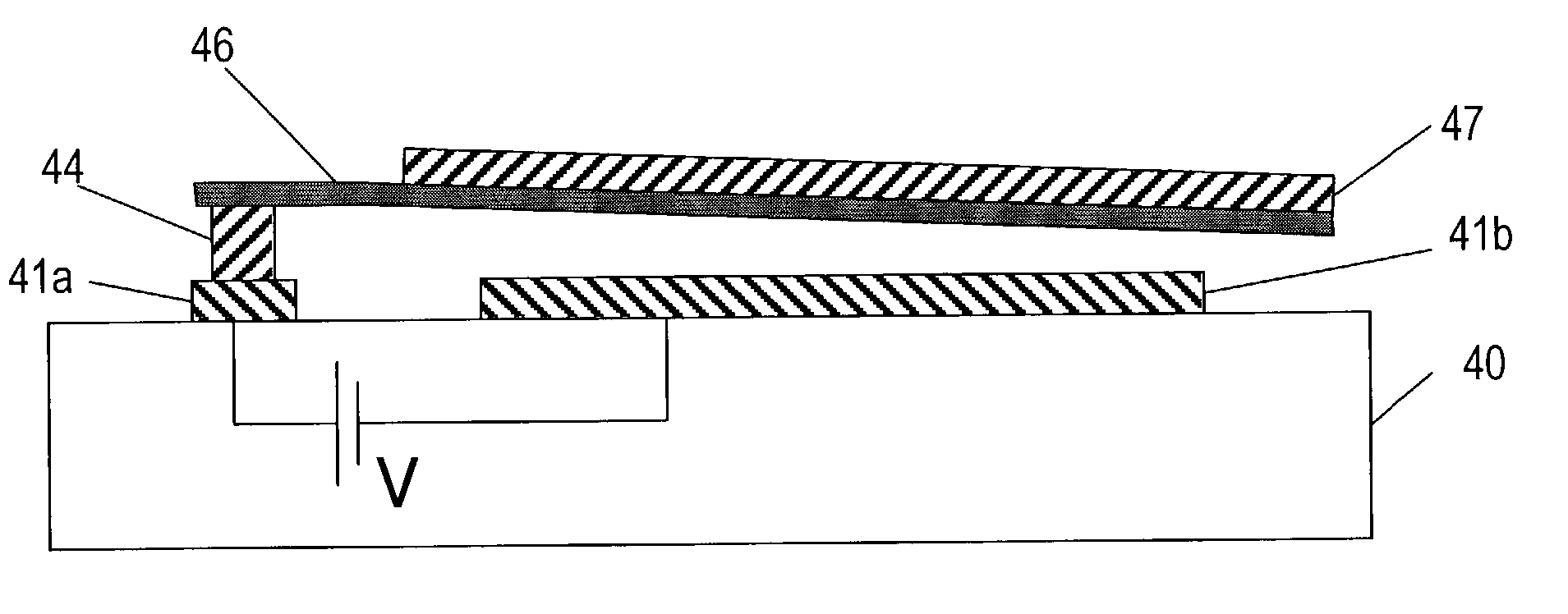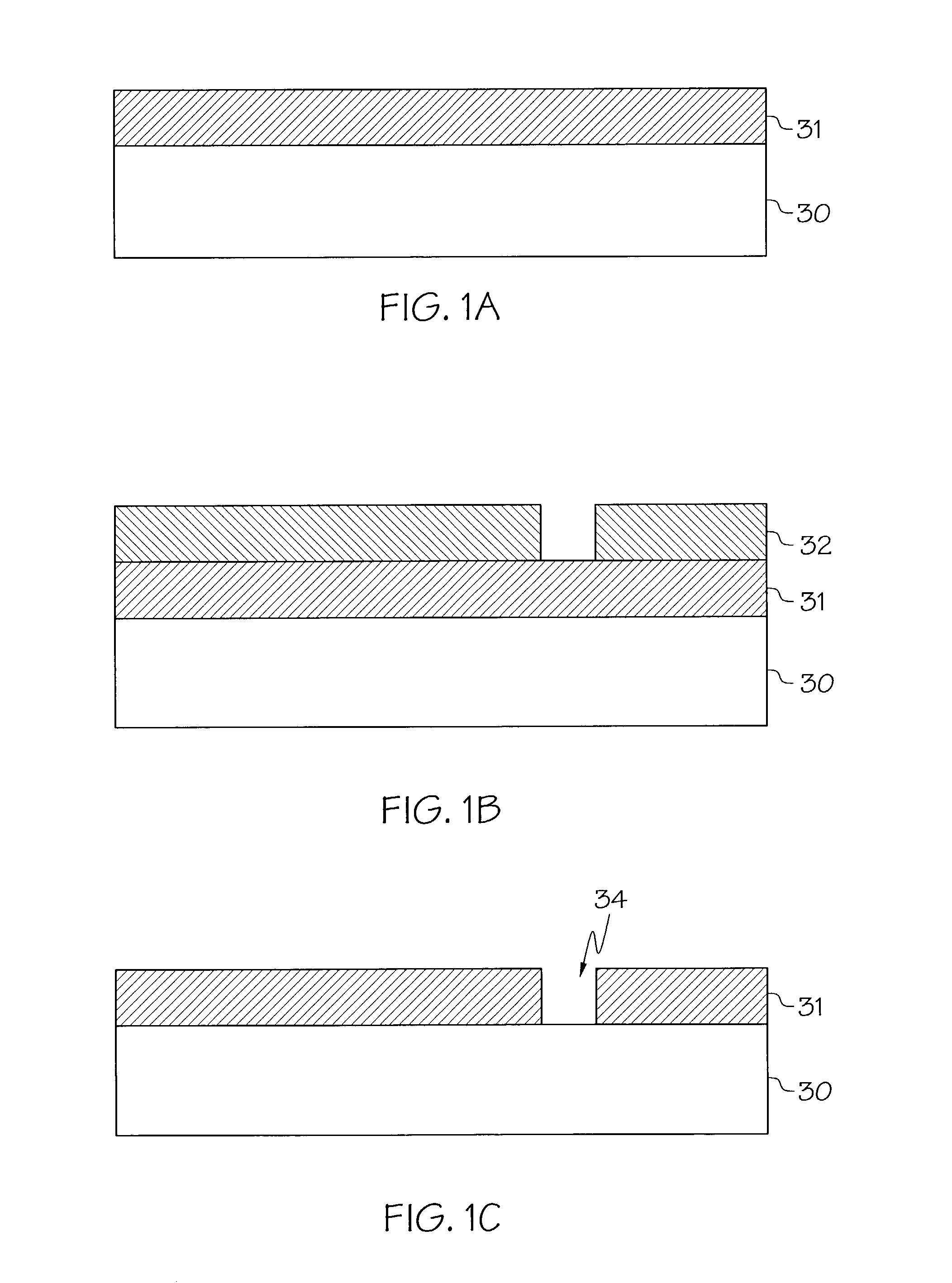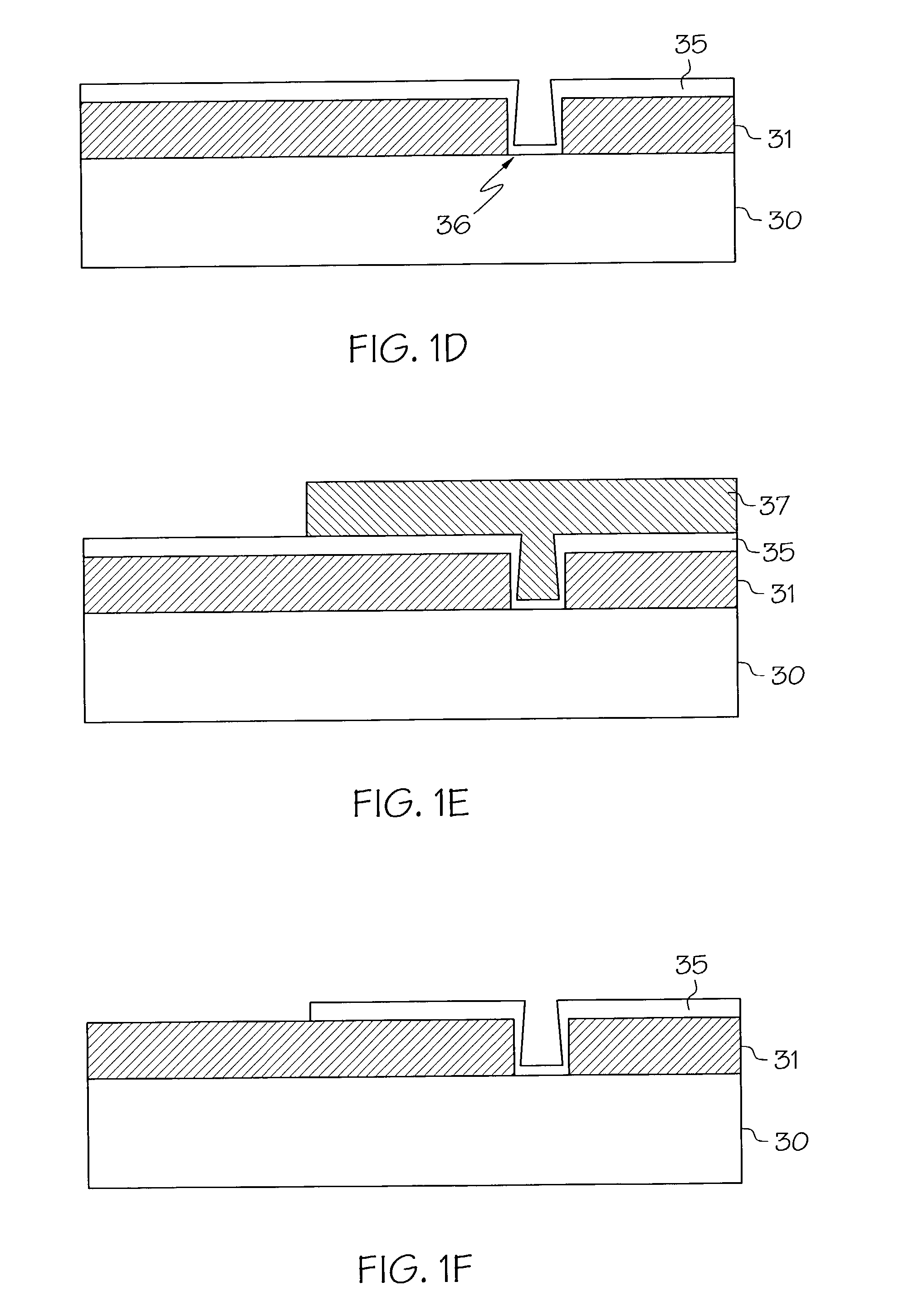MEMS device made of transition metal-dielectric oxide materials
a technology of transition metal and dielectric oxide, which is applied in the direction of microstructural devices, microstructure devices, radiofrequency control devices, etc., can solve the problems of mems materials that also undergo oxidation when exposed to oxygen, mems materials that are also susceptible to oxidation, etc., and achieve suitable hardness and elasticity characteristics. , the effect of reducing the risk of oxidation
- Summary
- Abstract
- Description
- Claims
- Application Information
AI Technical Summary
Benefits of technology
Problems solved by technology
Method used
Image
Examples
Embodiment Construction
Micromechanical Structure Fabrication:
[0024]Some of the materials of the present invention are known, such as for high temperature oxidation resistant barriers. However, as will be discussed below, such materials have not been used for MEMS devices, such as for hinges or other flexible portions of MEMS devices. A wide variety of MEMS devices can be made in accordance with the present invention, including sensors (e.g. pressure sensors and accelerometers); movable elements in microfluidics such as microvalves, micropumps and micronozzles; micromirrors for optical scanning, microscopy, spectroscopy, maskless lithography, projection displays and optical switching; MEMS switches such as DC relays and RF MEMS switches; variable capacitors, variable inductors and variable optical attenuators; phased array antennas and other military MEMS applications, microfabricated resonators, gyroscopes, microturbines, etc. The examples below are micromirrors, however any of these or other MEMS devices...
PUM
| Property | Measurement | Unit |
|---|---|---|
| Current | aaaaa | aaaaa |
| Current | aaaaa | aaaaa |
| Current | aaaaa | aaaaa |
Abstract
Description
Claims
Application Information
 Login to View More
Login to View More - R&D
- Intellectual Property
- Life Sciences
- Materials
- Tech Scout
- Unparalleled Data Quality
- Higher Quality Content
- 60% Fewer Hallucinations
Browse by: Latest US Patents, China's latest patents, Technical Efficacy Thesaurus, Application Domain, Technology Topic, Popular Technical Reports.
© 2025 PatSnap. All rights reserved.Legal|Privacy policy|Modern Slavery Act Transparency Statement|Sitemap|About US| Contact US: help@patsnap.com



